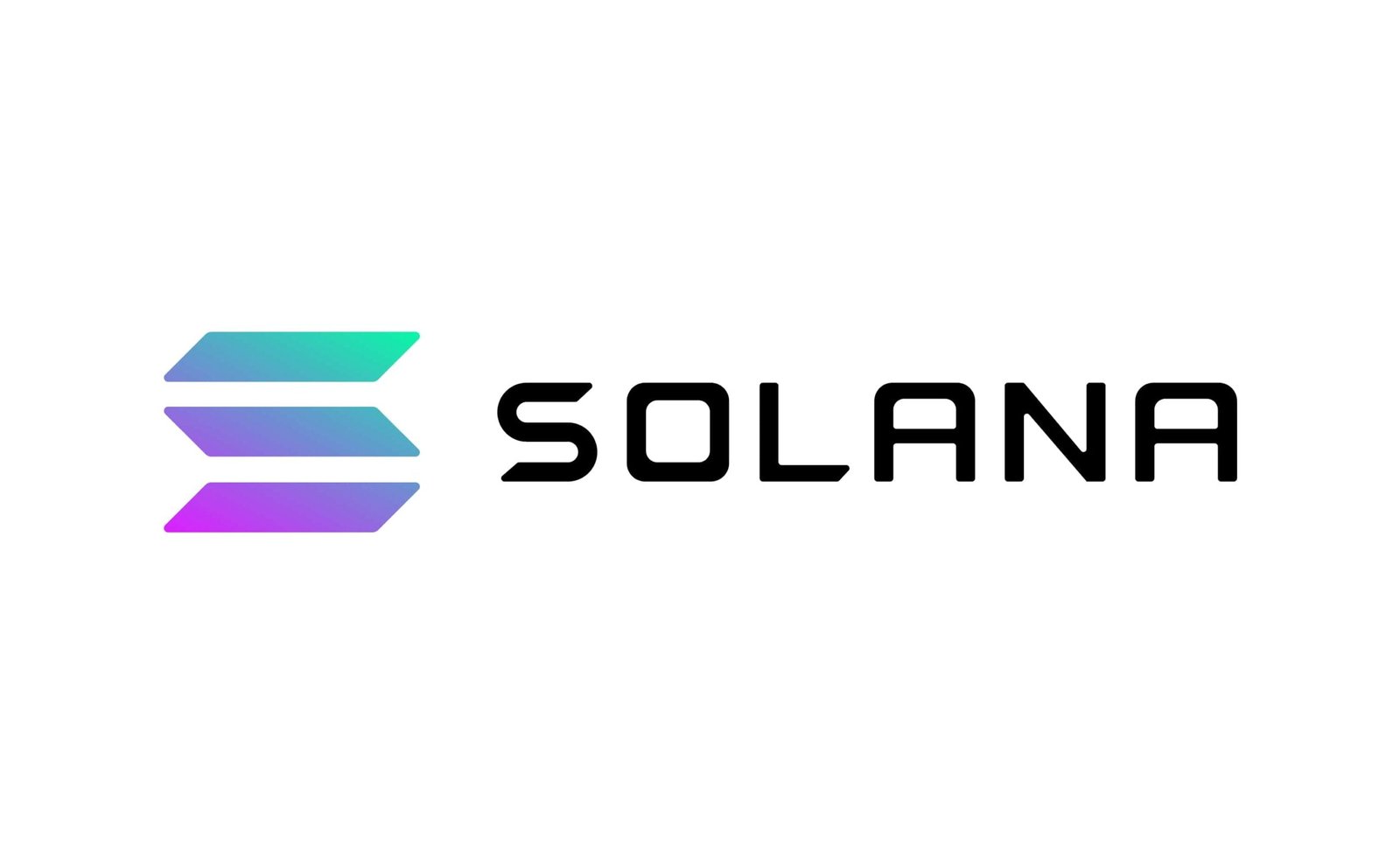Solana
Solana is a crypto and a blockchain launched in March 2020, allowing the development of decentralized applications, with the ambition of becoming the default option thanks to its speed and reduced commissions. It is therefore a competitor of Ethereum. It is an open-source project maintained by the Geneva-based Solana Foundation and built by the developers at San Francisco-based Solana Labs.
With a crazy price appreciation of more than 15,000% in 2021, Solana is the envy of many investors. But what do you really think of Solana? Passing fad or new era of blockchain?
What exactly is Solana?
Solana SOL
Decentralized transactions are possible through blockchain technology. But the technology we use to transfer cryptocurrencies has a major problem: it is slow. To put things into perspective, consider the Ethereum network, which can process around 15 transactions per second, compared to tens of thousands on the Visa network.
And that is exactly what Solana aims to change for the better. So what is Solana?
Solana is a programmable blockchain that strives to perform high-speed transactions without losing its main feature, decentralization. The network uses a new mechanism called “Proof of History”. SOL, the native blockchain token, is used for transaction fees and can also be pledged. Solana is a direct competitor to the Ethereum network.
What is a programmable blockchain?
Unlike bitcoin, which is mostly a huge immutable ledger, Solana uses smart contracts. These smart contracts are pieces of code that trigger actions when certain conditions are met.
Ethereum uses the smart contract feature to deploy decentralized applications (dApps). However, the sheer volume of these self-executing contracts has clogged the network.
Consider Ethereum’s relatively slow transfer speed and large number of smart contracts. The network is slow, the transfer fees are huge, and the carbon footprint is significant because it still operates on proof-of-work consensus.
Until the full deployment of Ethereum 2.0, it should give way to next-generation blockchains to gain a share of the dapps (decentralized applications) market. Ethereum version 2.0 is planned for 2022. Solana is the fastest programmable blockchain so far.
Solana operates on an adapted proof-of-stake consensus model, on which state-of-the-art core innovations have been deployed.
What makes Solana so fast is this combination of eight innovative features:
- Proof of History
- BFT tower
- Gulf Stream
- Turbine
- Sealevel
- Pipelining
- Cloudbreak
- Archivistes
PoH: What is proof of history?
The Solana blockchain uses the proof-of-history (PoH) algorithm, which is not a consensus mechanism but a cryptographic clock. PoH makes the whole network more efficient and faster because the nodes do not need to communicate to validate a block. Instead, they all have to agree on the temporal order of events recorded on the channel.
By having historical records of transactions and events on the blockchain, the system can easily keep track of the order of events.
PoH is achieved through nodes, as each has its own clock, and this is the main reason for network efficiency.
On the other hand, bitcoin uses proof-of-work consensus. This requires miners to validate transactions and produce new bitcoins with each new block. Miners must cooperate to reach consensus, for example to establish when a transaction has taken place.
The creator of Solana noted in his whitepaper the essential feature of proof of work, which Bitcoin uses – the ability to operate as a decentralized clock.
In traditional centralized systems, there is no need to have a clock because all nodes in the system can trust the accuracy of timestamps.
As the creator of Solana explained, PoH is a historical record that proves that an event took place at a specific point in time. Imagine taking a picture of today’s print newspaper and posting it online. By using PoH, Solana’s blockchain is able to handle more transactions, making the platform scalable and more efficient.
Tower BFT: Practical Fault Tolerance Optimized for PoH
Solana implements Practical Fault Tolerance, abbreviated pBFT (Practical Byzantine Fault Tolerance), which is optimized for PoH. pBFT is an algorithm that uses PoH as a cryptographic clock to help it reach consensus without having to send a communication stream between nodes. This algorithm significantly improves the speed of transactions.
Turbine: The Block Propagation Protocol
Another component of this high-speed blockchain is the turbine protocol, which bundles data to be transferred between nodes into smaller data packets. Transmitting data in smaller increments solves bandwidth issues and increases network processing speed.
Sealevel: Concurrent Smart Contracts
Solana’s runtime efficiency is also aided by the Sealevel engine, which allows transactions to be processed in parallel. This is a fundamental development in the blockchain industry, as Solana is the first blockchain that can perform parallel processing for the same instruction but having different inputs.
Gulf Stream: Solana’s memory management solution
Gulf Stream is Solana’s solution to reduce the pool of unconfirmed transactions. The system pushes the capture and transmission of transactions to the edge of the network. This allows validators to reduce confirmation times, execute transactions ahead of time, and reduce memory overhead from the pool of unconfirmed transactions. Gulf Stream allows Solana to reach 50,000 transactions per second.
Pipelining: Transaction processing unit to achieve single node efficiency
The pipelining process is an optimized way of processing the input data stream, which should be processed in sequential steps. Solana’s technical director compared the pipelining process to the way we do laundry. Clothes go through the process of washing, drying, and folding, and each of these steps must be done in that order, but by different units. This pattern is commonly used in CU design, and it allows transactions to be validated quickly and replicated to all nodes in the network.
Cloud Break: Solana’s Horizontal Scale State Architecture
Solana uses memory-mapped files and sequential operations to aid network scalability. Cloudbreak is the data structure that allows sequential writes and simultaneous reads between the 32 threads that the modern SSD supports.
Archiving: Solana’s Distributed Ledger Store
Archivers are used to store data. They download the data from the consensus validators. PoH technology enables the implementation of proof of replication (PoRep), for batch verification, across millions of replicator nodes worldwide. Archivers tell the network how many bytes they have available for the storage. Based on the total available archiver storage and the number of replicator identities, the network divides the ledger into appropriate chunks to match replication rate and fault tolerance. Archivers are rewarded 3% of inflation for their storage effort.
How does Solana work?
Why Solana isn’t Ethereum’s killer, but you should still find out.
Solana is the world’s first internet-based scalable blockchain. The platform’s permissionless blockchain can generate a throughput of 50,000 TPS thanks to its one-of-a-kind architecture.
Solana is designed to be the fastest blockchain on the market. It uses eight core functionalities (PoH, Tower BFT, Gulf Stream, Turbine, Sealevel, Pipelining, Cloudbreak, Archivers) that allow it to reach unprecedented transaction speeds.
Solana uses a PoS consensus mechanism, aided by the Tower BFT consensus.
The Tower BFT allows the network to achieve consensus by applying a universal time source called Proof of History. This creates a permanent reference for all nodes in the network. Do not confuse proof-of-history (PoH), the network’s permissionless clock, with a consensus mechanism.
Proof-of-history is a decentralized clock that helps secure the blockchain and is one of Solana’s eight core innovations. The BFT tower uses the permissionless clock to speed up transactions. The transaction parallelization system, Sealevel, allows smart contracts to run concurrently, using available GPUs and SSDs.
The Gulf Stream feature is the memory pool system, often referred to as mempool. It allows transactions to be transmitted to validators before the finalization of previous transactions. This maximizes the speed of transactions.
In summary, Solana’s processes work as follows:
- Receipt of the translation entry on the ledger
- The ledger sequences and orders messages so that they can be processed by other nodes efficiently.
- The same ledger executes transactions from the current state and stores them in RAM.
- The ledger publishes the transactions and the signature of the final state to the verifiers (these are the replication nodes).
- The verifiers perform the same transactions on the copy of the report and publish their signature of the report when they receive a confirmation.
- The published confirmations will be the votes for the consensus mechanism.
What apps work on Solana?
Now that you have a better understanding of what Solana is, you might be wondering what apps can run on the Solana network.
Solana is a programmable blockchain due to its ability to interact with smart contracts, just like Ethereum. Smart contracts support a range of decentralized applications (DApps), such as NFT markets, DeFi games and DEXs.
The most popular Solana apps are decentralized exchanges (DEX) and lending apps. The network can also support wrapped assets and stablecoins, such as USD Coin. You can find the entire Solana ecosystem here.
Who are Solana’s competitors?
Most permissionless blockchains see Solana as a potential competitor, as it is a viable alternative to older smart contract blockchains. Many compare Solana to Ethereum, which is the first blockchain-based server platform. Its main advantage is that the platform can process up to 50,000 TPS, while Ethereum’s rate is between 15 and 45 TPS.
Comparing size and development history, Solana’s competitors are SKALE Labs, 1Token, ARK, and Cindx. But the constant improvement of the project and its design differentiate it from all existing blockchains.
More than 250 partners to the credit of Solana
Solana launched its beta mainnet in March 2020. Since then, its native currency, SOL, has become one of the top 10 cryptocurrencies by market capitalization. Although the network offers full functionality, the developers are still working to improve the characteristics of the network.
Solana already has over 250 projects and partners, including USDC, Chainlink, BSN, and Serum. The Solana team is confident that scalability of DApps is no longer an issue and aims to bring in partners and capital to help them onboard a billion users.
Solana Labs plans to further accelerate the construction of the platform and plans to launch an investment and trading desk for the network. You can follow the developments of the Solana team on GitHub.
How to buy SOL?
Solana is attracting interest from buyers around the world, given its rapid business development and growth. Every day more and more cryptocurrency exchanges are listing SOL to trade it against fiat or other cryptos. Investors can buy SOL on Binance, Bitfinex, FTX, Coinbase and others. SOL can also be used for staking.
Ethereum Ξ | Explanation, How to Buy, How it Works and the Wallet?
Important information: All investments involve some degree of risk. As a general rule, you should only sell and buy or trade financial products that you are familiar with and understand the risks associated with. You should carefully consider your investment experience, financial situation, investment objectives, level of risk tolerance and consult your independent financial advisor regarding the appropriateness of your situation before making any investment.
Sources: PinterPandai, Investopedia, Cointelegraph, Forbes



